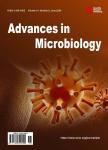Antibiotic Resistance of <i>Helicobacter pylori</i>and Eradication Rate in Japanese Pediatric Patients
Antibiotic Resistance of <i>Helicobacter pylori</i>and Eradication Rate in Japanese Pediatric Patients作者机构:Department of Pediatric and Adolescent Medicine Juntendo University Graduate School of Medicine Tokyo Japan Department of Pediatrics University of Maryland School of Medicine Baltimore USA
出 版 物:《Advances in Microbiology》 (微生物学(英文))
年 卷 期:2017年第7卷第4期
页 面:241-252页
学科分类:1002[医学-临床医学] 100201[医学-内科学(含:心血管病、血液病、呼吸系病、消化系病、内分泌与代谢病、肾病、风湿病、传染病)] 10[医学]
主 题:Resistance Eradication Rate Susceptibility Test Clarithromycin Metronidazole
摘 要:Helicobacter pylori (H. pylori) eradication rates achieved with a proton pump inhibitor (PPI), amoxicillin and clarithromycin have recently decreased to about 75% because of the increase in clarithromycin resistance in Japan. In the present study, H. pylori resistance rates against clarithromycin, amoxicillin and metronidazole were investigated in pediatric patients and eradication rates were evaluated when tailored antibiotics regimens based on antibiotic sensitivity data were used. We isolated H. pylori endoscopically from 77 pediatric patients suffering from abdominal symptoms. The susceptibility tests of H. pylori strains to clarithromycin, amoxicillin and metronidazole were examined and eradication therapy was tailored using the appropriate antibiotics. Seventy-seven patients were treated with a mean age of 12.16 ± 3.34 years (range, 4.92-19.75) consisting of 40 males and 37 females. The average resistance rates between 1998 and 2016 to clarithromycin, amoxicillin and metronidazole were 54.5% (42 of 77), 6.5% (5 of 77) and 5.2% (4 of 77) respectively. The prevalence of clarithromycin resistance increased significantly over time to reach 88.9% by 2013-2016. Successful eradication rates using tailored antibiotic treatment was 93.8% (61 of 65). Clarithromycin-based eradication therapy rate reached 92.6% against clarithromycin-sensitive strains. Metronidazole-based initial eradication therapy also had a high successful rate (97.0%) to clarithromycin-resistant strains. Although high rates of clarithromycin resistant H. pylori reaching about 90% were observed in Japanese children, tailored eradication therapy using the appropriate antibiotic agents were highly successful. H. pylori sensitivity testing and eradication therapy with appropriate antibacterial agents may contribute to accomplishment of high initial eradication rates and consequently reducing the incidence of developing gastric cancer.



